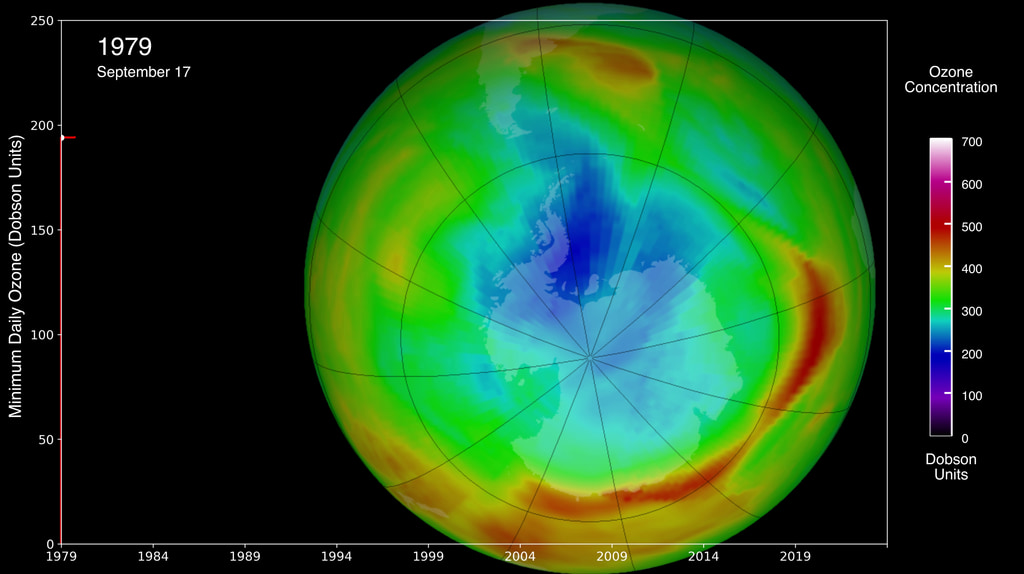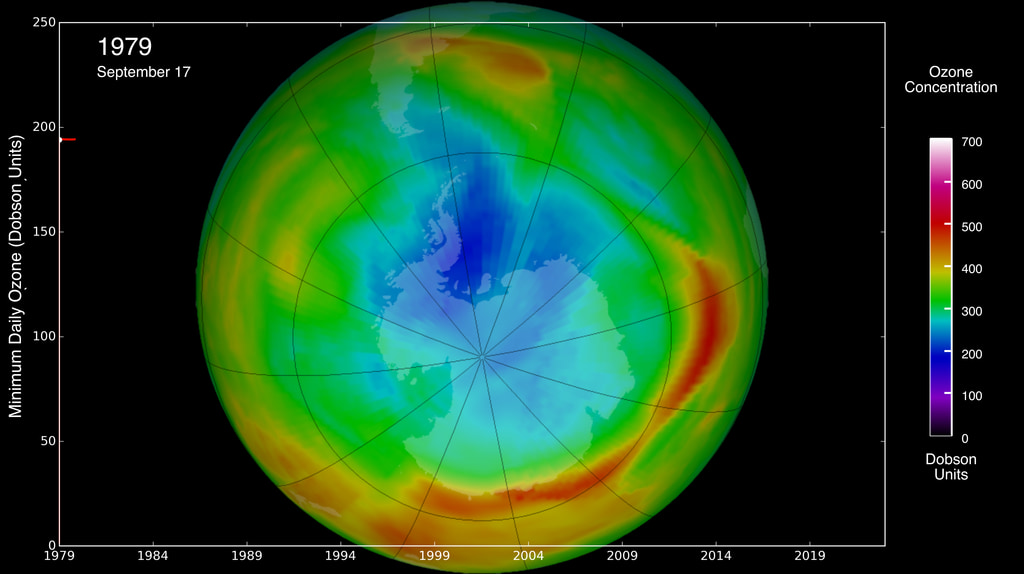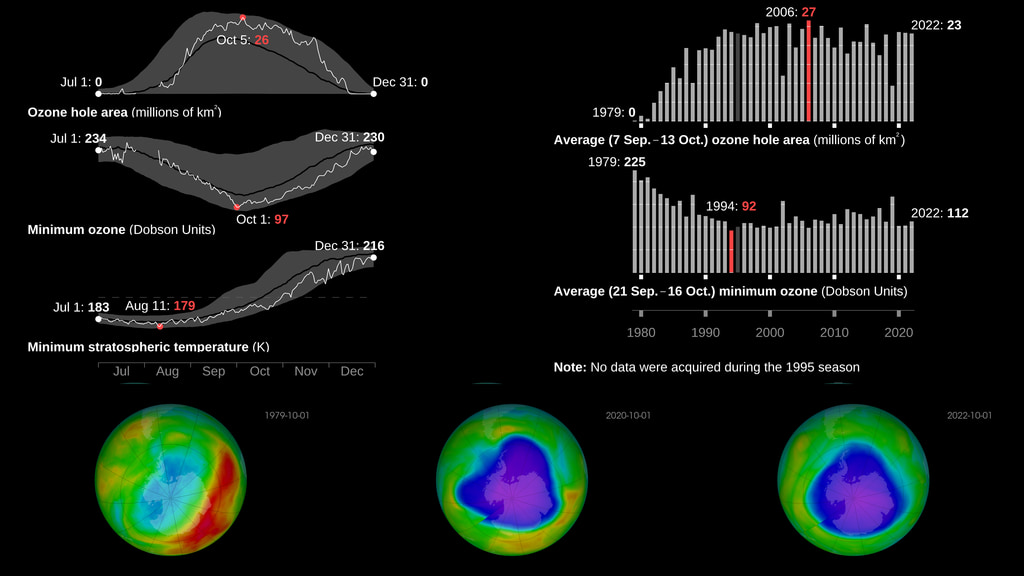A newer version of this visualization is available.
Ozonewatch 2021

Plots showing the size of the ozone hole.
Each year for the past few decades during the Southern Hemisphere spring, chemical reactions involving chlorine and bromine cause ozone in the southern polar region to be destroyed rapidly and severely. This depleted region is known as the “ozone hole.”
The area of the ozone hole is determined from a map of total column ozone. It is calculated from the area on the Earth that is enclosed by a line with a constant value of 220 Dobson Units (a unit of measure for total ozone.) The value of 220 Dobson Units is chosen since total ozone values of less than 220 Dobson Units were not found in the historic observations over Antarctica prior to 1979. Also, from direct measurements over Antarctica, a column ozone level of less than 220 Dobson Units is a result of the ozone loss from chlorine and bromine compounds.

Antarctic Ozone on October 1, 2021

Ozone on October 1 for various years between 1979 and 2021
Southern hemisphere ozone between July 1 and December 31 for selected years between 1979 and 2021
Credits
Please give credit for this item to:
NASA's Goddard Space Flight Center
-
Scientists
- Paul Newman (NASA/GSFC)
- Eric Nash (SSAI)
-
Technical support
- Marit Jentoft-Nilsen (Global Science and Technology, Inc.)
- Amy Moran (Global Science and Technology, Inc.)
Release date
This page was originally published on Wednesday, October 26, 2022.
This page was last updated on Sunday, February 2, 2025 at 12:42 AM EST.



